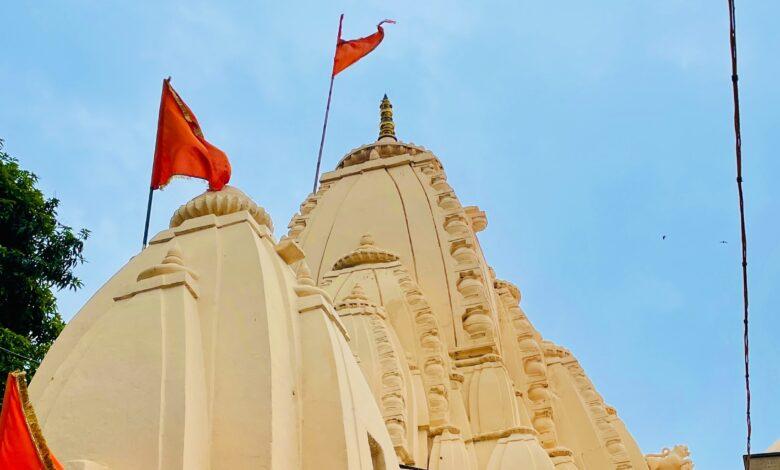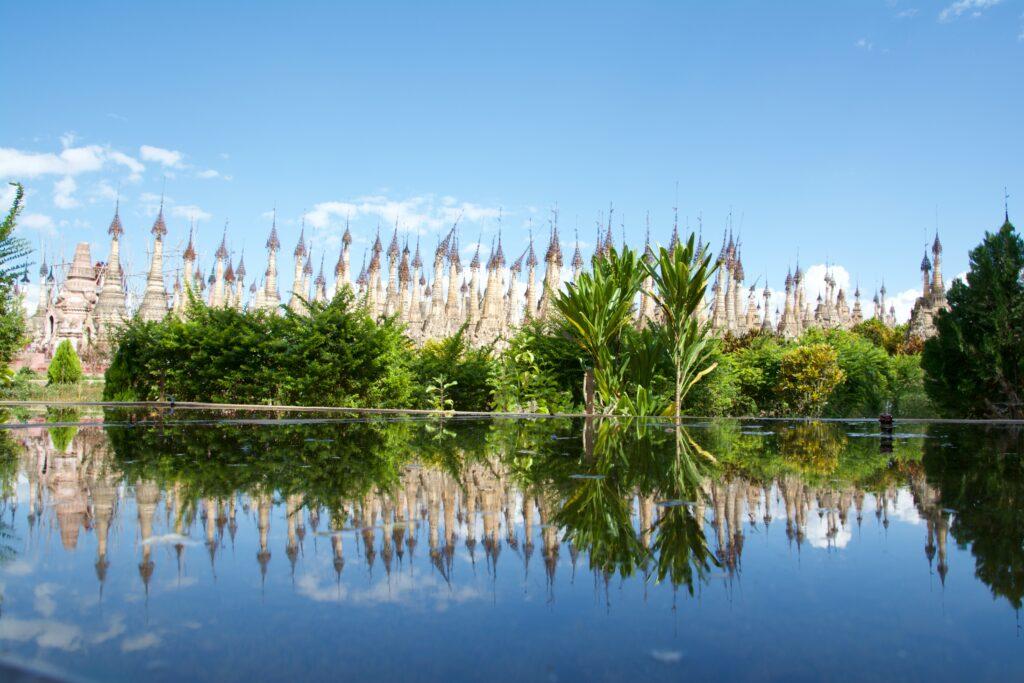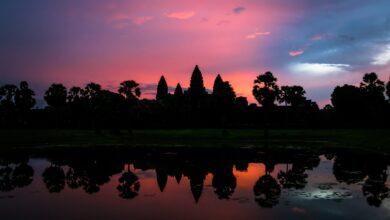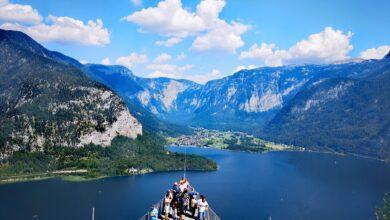🏛️ The Enigmatic Temples of Bagan, Myanmar 🇲🇲
Unveiling the Mystique of Bagan's Ancient Marvels

Introduction
Nestled along the banks of the Ayeyarwady River, the ancient city of Bagan in Myanmar stands as a testament to a bygone era of grandeur and spirituality. Home to a sprawling landscape dotted with over 2,000 temples, the enigmatic allure of Bagan’s architectural marvels draws travelers and historians alike. In this blog post, we embark on a virtual journey through the dusty paths of time, exploring the rich history, intricate designs, and mystical charm of the temples that make Bagan an unparalleled destination.
Historical Context
Bagan, located in modern-day Myanmar, boasts a rich historical timeline that spans over a millennium. The city served as the capital of the powerful Bagan Empire, which emerged in the 9th century and reached its zenith in the 11th to 13th centuries. During this period, Bagan became a flourishing center of culture, trade, and religion. The empire’s influence extended far beyond its borders, leaving an indelible mark on Southeast Asian history.
Overview of Bagan’s Historical Timeline
The Bagan Empire’s rise was marked by strategic military conquests and adept governance. The visionary leadership of King Anawrahta played a pivotal role in unifying the region and laying the foundation for the empire’s prosperity. The capital city of Bagan became a vibrant hub of innovation, with advancements in art, literature, and architecture. The empire’s timeline is punctuated by notable events, including the construction of thousands of temples that dot the landscape, creating an awe-inspiring legacy that endures to this day.
The Rise of the Bagan Empire and Its Impact on Temple Construction
At the heart of Bagan’s ascendancy was the patronage of Theravada Buddhism by King Anawrahta. The king embraced Buddhism and actively promoted its teachings, unifying the diverse regions under a common faith. This spiritual zeal manifested in the construction of magnificent temples and pagodas. The temples not only served as places of worship but also as symbols of the empire’s grandeur. The architectural marvels, such as the Ananda Temple and Shwezigon Pagoda, stand testament to the Bagan Empire’s commitment to Buddhism and its enduring impact on temple construction.
The Influence of Buddhism on Temple Architecture
Buddhism’s profound influence on temple architecture in Bagan is evident in the intricate designs and spiritual symbolism embedded in each structure. The temples were not merely places of worship but were designed to represent the cosmic order and spiritual journey. Intricately carved reliefs, stupas, and Buddha statues adorned the temples, reflecting the sublime teachings of Buddhism. The fusion of religious fervor and architectural brilliance resulted in the creation of an unparalleled temple complex, showcasing Bagan’s unique blend of spiritual and artistic achievements. The legacy of Bagan’s temple architecture continues to captivate visitors, offering a glimpse into a bygone era where faith and creativity converged to shape an empire’s destiny.
Bagan’s Temple Architecture
Variety in Temple Sizes and Shapes
One of the most remarkable aspects of Bagan’s temple architecture lies in the diverse array of sizes and shapes that characterize the temple complex. Ranging from small shrines to colossal pagodas, the temples of Bagan showcase a remarkable variety that reflects the architectural evolution over several centuries. The smaller temples, often simple in design, were dedicated to local deities and served as community places of worship. In contrast, the larger temples, such as the Thatbyinnyu Temple, stood as majestic symbols of the empire’s religious and political influence. This variety in sizes and shapes contributes to the enchanting tapestry of Bagan’s skyline, offering a visual feast for those exploring this ancient city.
Distinctive Features of Bagan Temples
Each temple in Bagan bears distinct features that make it a unique masterpiece. One of the defining characteristics is the use of stupas, which are hemispherical structures that house relics and represent the enlightened mind of Buddha. The temples often feature multiple terraces, intricate carvings, and tiered spires, creating a mesmerizing silhouette against the backdrop of the Myanmar landscape. The Ananda Temple, with its gilded spires and four standing Buddhas facing the cardinal directions, exemplifies the distinctive features that set Bagan’s temples apart. Additionally, the temples incorporate a blend of indigenous Burmese, Indian, and Mon architectural styles, reflecting the cultural diversity that influenced Bagan’s artistic heritage.
Showcase of Architectural Details and Craftsmanship
Bagan’s temples are a testament to the exceptional craftsmanship and attention to detail of the artisans who dedicated themselves to these monumental projects. The exteriors are adorned with intricately carved reliefs depicting scenes from Buddhist scriptures, mythological tales, and everyday life during the Bagan Empire. The precision in stone carving and the meticulous placement of decorative elements showcase the high level of skill possessed by the ancient craftsmen. Visitors marvel at the ornate doorways, graceful arches, and the harmonious blending of geometric patterns, all of which contribute to the immersive experience of exploring Bagan’s architectural wonders. The showcase of such architectural details not only highlights the technical prowess of the builders but also serves as a living history book, narrating the stories and beliefs of a bygone era.
Cultural Significance
Role of Temples in Bagan’s Cultural and Religious Life
The temples of Bagan are not merely architectural marvels but serve as the beating heart of the city’s cultural and religious life. In the heyday of the Bagan Empire, these temples were not only places of worship but also centers for community gatherings, education, and artistic expression. The pervasive influence of Theravada Buddhism meant that the temples played a pivotal role in shaping the ethical and moral fabric of Bagan society. The rituals and ceremonies held within the temple precincts were integral to the daily lives of the people, fostering a sense of unity and shared cultural identity.
Connection Between Bagan’s Temples and the Local Community
The temples of Bagan are deeply intertwined with the local community, forging a symbiotic relationship that transcends mere architectural significance. Local festivals, marked by vibrant processions and religious ceremonies, often find their focal point within these sacred structures. The temples serve as community gathering spaces, where residents come together to celebrate, mourn, and seek spiritual guidance. Moreover, the upkeep and preservation of these temples have been traditionally entrusted to the local communities, fostering a sense of responsibility and pride. This intimate connection between Bagan’s temples and the local populace underscores the enduring cultural relevance of these historical monuments.
Reflection of Cultural Diversity in Temple Art and Inscriptions
The art and inscriptions adorning Bagan’s temples provide a captivating glimpse into the cultural diversity that characterized the region during the height of the Bagan Empire. The temple walls are adorned with intricate carvings depicting not only Buddhist themes but also scenes from everyday life, mythological tales, and cultural exchanges with neighboring regions. The inscriptions, written in various scripts including Pali and Mon, reveal the multiethnic influences that contributed to Bagan’s rich cultural tapestry. Bagan’s temples thus stand as living testimonials to the cross-cultural pollination that occurred in this ancient city, showcasing the harmonious coexistence of diverse cultural elements within the broader framework of Theravada Buddhism. As visitors explore these temples, they embark on a cultural journey through time, appreciating the nuanced interplay of artistic expression and historical narratives that define Bagan’s enduring cultural significance.

The Mystique of Bagan’s Temples
Bagan’s temples exude an ineffable mystique, casting a spell on all who wander through their ancient corridors. The mystical atmosphere that envelops these architectural wonders is palpable, creating an otherworldly ambiance that transcends time. As the sun sets over the plains, casting a warm glow on the temples, a sense of enchantment and spiritual energy permeates the air. This mystique is deeply rooted in the centuries-old history of Bagan, where the intersection of religion, culture, and art has given rise to an aura that captivates the imagination of visitors from around the world.
Exploration of Popular Myths and Legends Associated with Specific Temples
The temples of Bagan are not just stone structures; they are repositories of myths and legends that add layers to their mystique. Each temple seems to whisper tales of bygone eras, and some are shrouded in captivating stories. Take the Dhammayangyi Temple, for example, rumored to be cursed due to its abrupt construction halting after the death of its king. The legends surrounding Ananda Temple, with its mysterious disappearing Buddha statue, further contribute to the mystique. These myths, passed down through generations, infuse the temples with a sense of the supernatural, inviting visitors to explore not just the physical structures but the captivating narratives that cling to their ancient walls.
Experiences of Travelers and Locals in Sensing the Mystique
The mystique of Bagan’s temples is not confined to the realm of myths; it is a living experience recounted by both travelers and locals alike. Visitors often speak of a spiritual energy that pervades the temple complex, describing a feeling of transcendence and awe as they navigate the labyrinthine passages. Locals, who have grown up in the shadow of these ancient structures, share tales of spiritual encounters and unexplained phenomena. Some claim to hear echoes of ancient chants in the wind, while others speak of moments of deep introspection and connection with something beyond the tangible. The collective experiences of those who traverse Bagan’s temples underscore the enigmatic allure that continues to draw pilgrims, scholars, and wanderers to this sacred landscape. In the midst of these weathered stones, there exists a mystique that transcends the boundaries of time, inviting all who enter to become part of the enduring legend of Bagan.
Preservation Efforts
Overview of Challenges Faced in Preserving Bagan’s Temples
Preserving the ancient temples of Bagan presents a complex set of challenges that stem from both natural and human factors. Exposure to the elements, including earthquakes, floods, and erosion, poses an ongoing threat to the structural integrity of these centuries-old monuments. Additionally, the rapid growth of tourism in the region has raised concerns about the wear and tear caused by foot traffic, as well as the potential impact of modern development on the archaeological site. Balancing the need for accessibility with the imperative to safeguard Bagan’s cultural heritage has become a critical consideration in preservation efforts.
Initiatives Taken by Local and International Organizations
Recognizing the urgency of preserving Bagan’s temples, both local and international organizations have rallied to implement initiatives aimed at conservation and restoration. Local efforts often involve community engagement, with residents actively participating in maintenance and restoration projects. Internationally, partnerships with organizations such as UNESCO and the World Monuments Fund have provided crucial support. These collaborations focus on not only preserving the physical structures but also implementing sustainable practices that respect the cultural and historical significance of the site. Through a combination of research, training programs, and conservation projects, these initiatives strive to ensure the longevity of Bagan’s temples for future generations.
The Delicate Balance Between Tourism and Conservation
The surge in tourism to Bagan brings both economic benefits and conservation challenges. Striking a delicate balance between promoting tourism and preserving the sanctity of the site is a paramount concern. Measures such as controlled visitor access, responsible tourism guidelines, and infrastructure development are being implemented to mitigate the impact of large tourist numbers. The goal is to offer an enriching experience for visitors while minimizing the environmental and cultural footprint. Sustainable tourism practices, coupled with educational programs for visitors, play a pivotal role in fostering an understanding of the delicate equilibrium required to protect Bagan’s temples for the long term. As the world continues to marvel at the magnificence of this ancient city, the collaborative efforts of local and international entities become increasingly crucial in safeguarding the legacy of Bagan’s temples.
Visitors’ Guide
Practical Tips for Exploring Bagan’s Temples
Navigating the vast expanse of Bagan’s temples can be a delightful yet overwhelming experience. To make the most of your visit, consider some practical tips. Start your day early to witness the sunrise over the temples, bringing the landscape to life in a golden hue. Wear comfortable clothing and sturdy shoes, as exploring the uneven terrain may involve some walking. Carry sufficient water, sunscreen, and insect repellent, especially if you plan on visiting during the warmer months. Hiring a knowledgeable local guide can enhance your experience, providing insights into the history and significance of the temples.
Must-Visit Temples and Lesser-Known Gems
While iconic temples like Ananda and Shwezigon Pagoda are must-visit attractions, don’t miss the opportunity to explore lesser-known gems that offer a quieter, more intimate experience. The Sulamani Temple, adorned with exquisite murals, and the Dhammayangyi Temple, with its mysterious aura, are among the hidden treasures worth discovering. Venturing off the beaten path allows you to encounter temples with fewer crowds, providing a more contemplative and personal connection with Bagan’s rich heritage.
Recommended Activities for a Holistic Experience
To truly immerse yourself in the magic of Bagan, consider engaging in activities that go beyond temple exploration. Take a hot air balloon ride during sunrise to witness the awe-inspiring landscape from above, providing a unique perspective of the temples dotting the plains. Attend a traditional puppet show or cultural performance in the evening to appreciate the local arts. Embrace the opportunity to interact with the friendly locals, perhaps by joining a cooking class or participating in a traditional almsgiving ceremony. Balancing temple visits with diverse experiences ensures a holistic understanding of Bagan’s cultural and natural treasures.
As you embark on your journey through Bagan, these practical tips, temple recommendations, and holistic activities will enhance your visit, allowing you to create lasting memories and forge a meaningful connection with this ancient and enchanting city.
FAQs
Q. Accessibility for Disabled Visitors
A. Bagan is committed to inclusivity, with many temples accessible to disabled visitors. Ramps and designated paths ensure a meaningful experience for everyone.
Q.Best Time to Visit
A. The ideal time to visit is from November to February when the weather is cool and dry, offering the best conditions for exploration.
Q.Unique Temple Features
A. Each temple holds distinct features; some boast intricate carvings, while others offer panoramic views. Explore widely to discover the unique charm of each.
Q.Cultural Sensitivity
A. Respect local customs by dressing modestly and removing shoes before entering temples. Engage with locals with a friendly demeanor.
Q.Exploring Bagan on a Budget
A. Enjoy Bagan on a budget by opting for affordable accommodations, local eateries, and exploring on foot or by bike.
Q.How to Contribute to Preservation
A. Support preservation by respecting temple guidelines, avoiding physical contact with structures, and contributing to reputable conservation initiatives.
Conclusion
As the sun sets over the horizon, casting a warm glow upon the weathered bricks and towering spires, the enigmatic temples of Bagan whisper tales of a glorious past. In every weathered stone and ornate carving, the spirit of a bygone empire lives on, inviting all who wander to be part of its timeless narrative. Bagan’s temples, with their mystique and cultural significance, continue to stand as not just architectural wonders but as living witnesses to the ebb and flow of centuries. As we bid farewell to this extraordinary journey, the magic of Bagan lingers, a beckoning call to those yet to explore its secrets and embrace the enduring charm of Myanmar’s crown jewel.
UP NEXT
https://touristeyes.com/street-art-of-barcelonas-gothic/




Facebook Comments